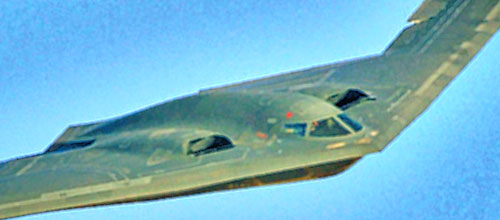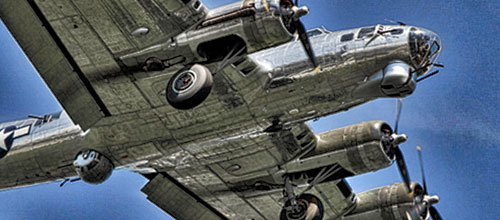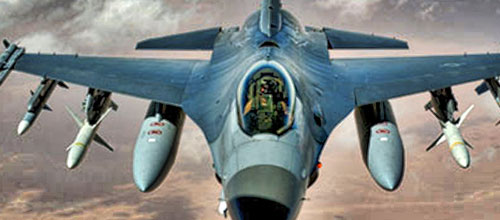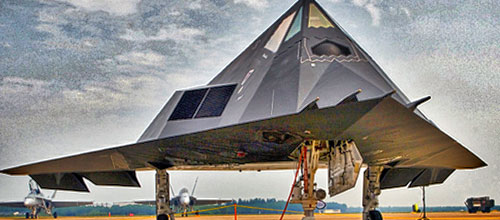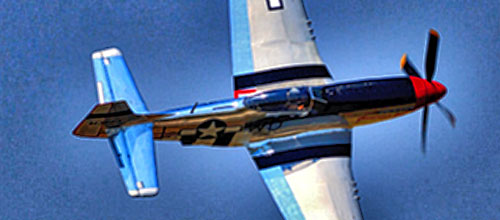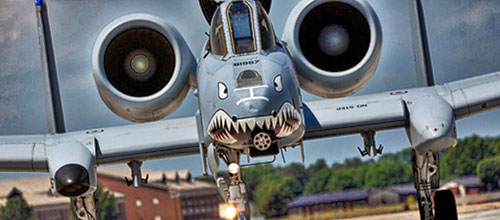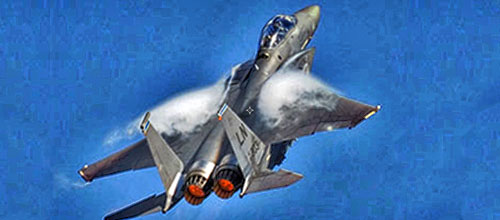Owls Head Transportation Museum
Route 73, Owls Head, Maine
207-594-4418
info@ohtm.org
The Owls Head Transportation Museum has one of the finest collections of pioneer-era aircraft and automobiles in the world. More than 100 historic aircraft, automobiles, bicycles, carriages and engines are on permanent display. The Aircraft Collection contains replicas and originals representing the first century of flight, from Cayley’s unmanned glider (1804) to the legendary Curtiss Jenny of the barnstorming era. An outstanding collection of automobiles spans the late 19th Century and early 20th century, and includes the 1963 Prototype Mustang and a 1935 Stout Scarab (called the world’s first mini-van, one of only six ever made).
There are over 150 items in our collection and you are invited to click on the thumbnails below which will take you to pages containing pictures and details of the museum’s significant collections.
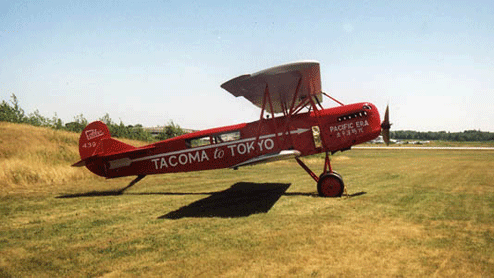
The Museum’s C.IVa had a varied career. Leaving the factory in its present form, it became involved in a scheme to fly non-stop from Tacoma to Tokyo. Soon after takeoff it crashed, was abandoned, burned in a grass fire, was salvaged and finally brought to Maine by Museum Trustee Kenneth Cianchette, who restored it.
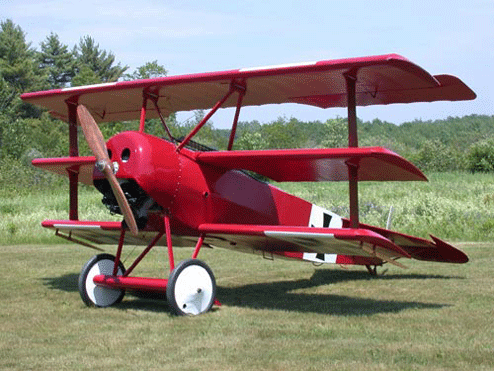
The Dr.I, immortalized by Manfred von Richthofen, the Red Baron, was inspired by the success of the British Sopwith triplane (essentially a Pup with a third wing surface added). Richthofen scored the final 21 of his 80 victories in his bright crimson craft. The “D” designates a single engined fighter plane of the German air forces. Slower than most of its contemporaries, the small triplane’s agility enabled Dr.I masters to amass great numbers of victories. German aces who flew the Dr.I were the Red Baron’s brother Lothar, Werner Voss, Ernst Udet, and Hermann Goering. By 1918 the Dr.I was being replaced by the superior D.VII biplane, however by then the war was all but over.
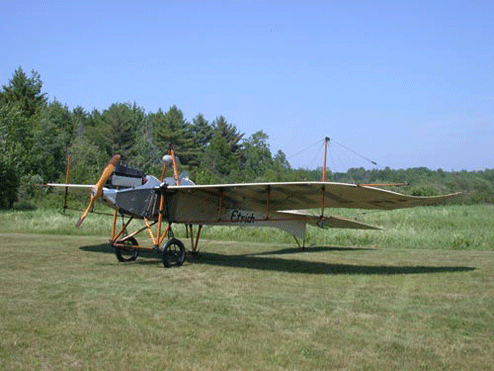
The Taube’s wing design is based on the zanonia tree seed pod, which drifts through the air for great distances. First produced for sporting purposes, Taubes were later used for observation and training by Germany and Austro-Hungary during World War I. Ironically, the Taube (meaning Dove, the peace symbol) was first to drop bombs in war; the Balkans in 1911 and Paris in 1914.
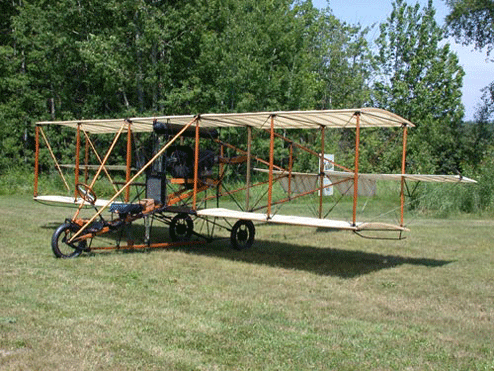
The Curtiss Model D pusher was a stock model which could be bought with one of several Curtiss engines; 40, 60 or 75 horsepower. The Model D was the basis for one of Curtiss’s most famous achievements – the first amphibian airplane capable of landing on and taking off from land or water. The Model D was the first airplane to takeoff from (November 1910) and land on (January 1911) an anchored ship. Used as an observation plane for the United States Signal Corps, the Model D was one of the first aircraft to utilize ailerons for banking and turning instead of wing warping. Our replica was built in 1961 in Sacramento, CA by Carl Mueller, who once worked for Curtiss at the US Navy Flying School in San Diego. It was acquired from Jack Gardiner in 1975. One note of significance in relation to the Curtiss airplanes is that Lincoln Beachy was the first pilot in the United States to perform an inside loop, on November 25, 1913 in a Curtis Special Looper. The first inside loop was performed by Petr Nesterov, a Russian Army officer, on September 9, 1913.
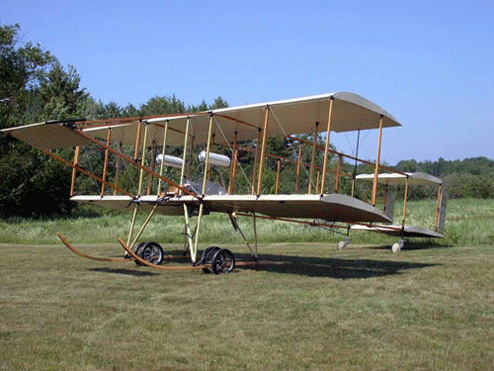
The Henri Farman III, one of the most famous and widely used of early European biplanes, was the first aircraft produced by Farman’s factory in France. It had full ailerons which made it controllable by giving roll, or banking, control as well as sprung wheels on the landing skids to come ” … to earth most perfectly and with the least shock.” It won distance, altitude and passenger carrying awards at the Rheims air meet of August 1909. Farman had earlier been the first in Europe to fit practical ailerons to an airplane; a Voison-Farman I bis, in October 1908. The Farman III was the first aeroplane to fly from England to Ireland. In the interest of flight safety, the Museum’s replica is slightly modified from the original.
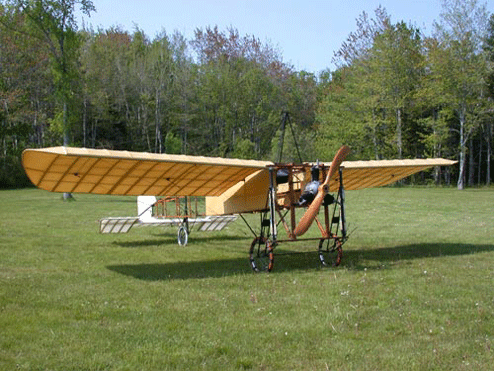
Louis Bleriot’s Type XI incorporated many innovations including the monoplane wing, tractor engine, rear rudder, enclosed cockpit, horizontal stabilizer and swiveling landing gear to permit crosswind takeoffs. In 1909 Bleriot, in a Type XI, became the first to fly across the English Channel, flying from Calais, France to Dover, England on July 25th. Both a designer and a pilot, pioneer French aviator Bleriot was still on crutches from a previous crash when he made this flight of 21 miles in 38 minutes- through fog and mist, without a compass. This airplane was powered by an Anzani engine, similar to that on the Bellanca. Anzanis were known to have problems with overheating, and had Bleriot not flown through a passing rain shower, thus cooling his engine, he might not have completed his historic flight. Like almost all planes of this early era, bank was controlled by warping the wings. In 1913 a Bleriot piloted by Adolphe Pegoud was the first aircraft to be flown in sustained inverted flight. Landing gear consists of simple bicycle wheels and rubber bungee cord shocks.



